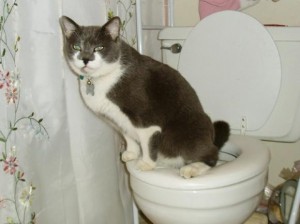Why You Shouldn't Flush Cat Poop Down Your Toilet - Preserve Your Plumbing Health
Why You Shouldn't Flush Cat Poop Down Your Toilet - Preserve Your Plumbing Health
Blog Article
Do you find yourself hunting for facts and techniques How to Dispose of Cat Poop and Litter Without Plastic Bags?

Introduction
As feline owners, it's vital to be mindful of exactly how we take care of our feline close friends' waste. While it might appear hassle-free to flush cat poop down the toilet, this practice can have harmful consequences for both the environment and human wellness.
Alternatives to Flushing
Fortunately, there are more secure and a lot more liable ways to take care of pet cat poop. Consider the adhering to alternatives:
1. Scoop and Dispose in Trash
One of the most common technique of disposing of pet cat poop is to scoop it into an eco-friendly bag and toss it in the garbage. Be sure to utilize a dedicated litter inside story and take care of the waste quickly.
2. Use Biodegradable Litter
Opt for eco-friendly cat trash made from materials such as corn or wheat. These trashes are environmentally friendly and can be safely taken care of in the garbage.
3. Hide in the Yard
If you have a backyard, take into consideration hiding feline waste in an assigned area far from veggie gardens and water sources. Make sure to dig deep enough to stop contamination of groundwater.
4. Install a Pet Waste Disposal System
Purchase an animal waste disposal system specifically made for feline waste. These systems make use of enzymes to break down the waste, decreasing smell and ecological influence.
Health and wellness Risks
Along with ecological concerns, flushing pet cat waste can also position health and wellness threats to humans. Feline feces might have Toxoplasma gondii, a parasite that can trigger toxoplasmosis-- a potentially serious ailment, particularly for expecting ladies and individuals with weakened body immune systems.
Ecological Impact
Flushing cat poop introduces hazardous microorganisms and parasites right into the water supply, positioning a considerable danger to water ecological communities. These contaminants can adversely influence aquatic life and concession water high quality.
Verdict
Responsible family pet ownership expands beyond giving food and sanctuary-- it also involves correct waste monitoring. By refraining from purging cat poop down the commode and choosing different disposal approaches, we can reduce our ecological impact and safeguard human health and wellness.
Why Can’t I Flush Cat Poop?
It Spreads a Parasite
Cats are frequently infected with a parasite called toxoplasma gondii. The parasite causes an infection called toxoplasmosis. It is usually harmless to cats. The parasite only uses cat poop as a host for its eggs. Otherwise, the cat’s immune system usually keeps the infection at low enough levels to maintain its own health. But it does not stop the develop of eggs. These eggs are tiny and surprisingly tough. They may survive for a year before they begin to grow. But that’s the problem.
Our wastewater system is not designed to deal with toxoplasmosis eggs. Instead, most eggs will flush from your toilet into sewers and wastewater management plants. After the sewage is treated for many other harmful things in it, it is typically released into local rivers, lakes, or oceans. Here, the toxoplasmosis eggs can find new hosts, including starfish, crabs, otters, and many other wildlife. For many, this is a significant risk to their health. Toxoplasmosis can also end up infecting water sources that are important for agriculture, which means our deer, pigs, and sheep can get infected too.
Is There Risk to Humans?
There can be a risk to human life from flushing cat poop down the toilet. If you do so, the parasites from your cat’s poop can end up in shellfish, game animals, or livestock. If this meat is then served raw or undercooked, the people who eat it can get sick.
In fact, according to the CDC, 40 million people in the United States are infected with toxoplasma gondii. They get it from exposure to infected seafood, or from some kind of cat poop contamination, like drinking from a stream that is contaminated or touching anything that has come into contact with cat poop. That includes just cleaning a cat litter box.
Most people who get infected with these parasites will not develop any symptoms. However, for pregnant women or for those with compromised immune systems, the parasite can cause severe health problems.
How to Handle Cat Poop
The best way to handle cat poop is actually to clean the box more often. The eggs that the parasite sheds will not become active until one to five days after the cat poops. That means that if you clean daily, you’re much less likely to come into direct contact with infectious eggs.
That said, always dispose of cat poop in the garbage and not down the toilet. Wash your hands before and after you clean the litter box, and bring the bag of poop right outside to your garbage bins.
https://trenchlesssolutionsusa.com/why-cant-i-flush-cat-poop/

I'm certainly very enthusiastic about Don’t flush cat feces down the toilet and I'm hoping you liked the post. Do you know about another person who is occupied with the subject? Take a moment to promote it. Thank you so much for your time invested reading it.
Top Article Report this page